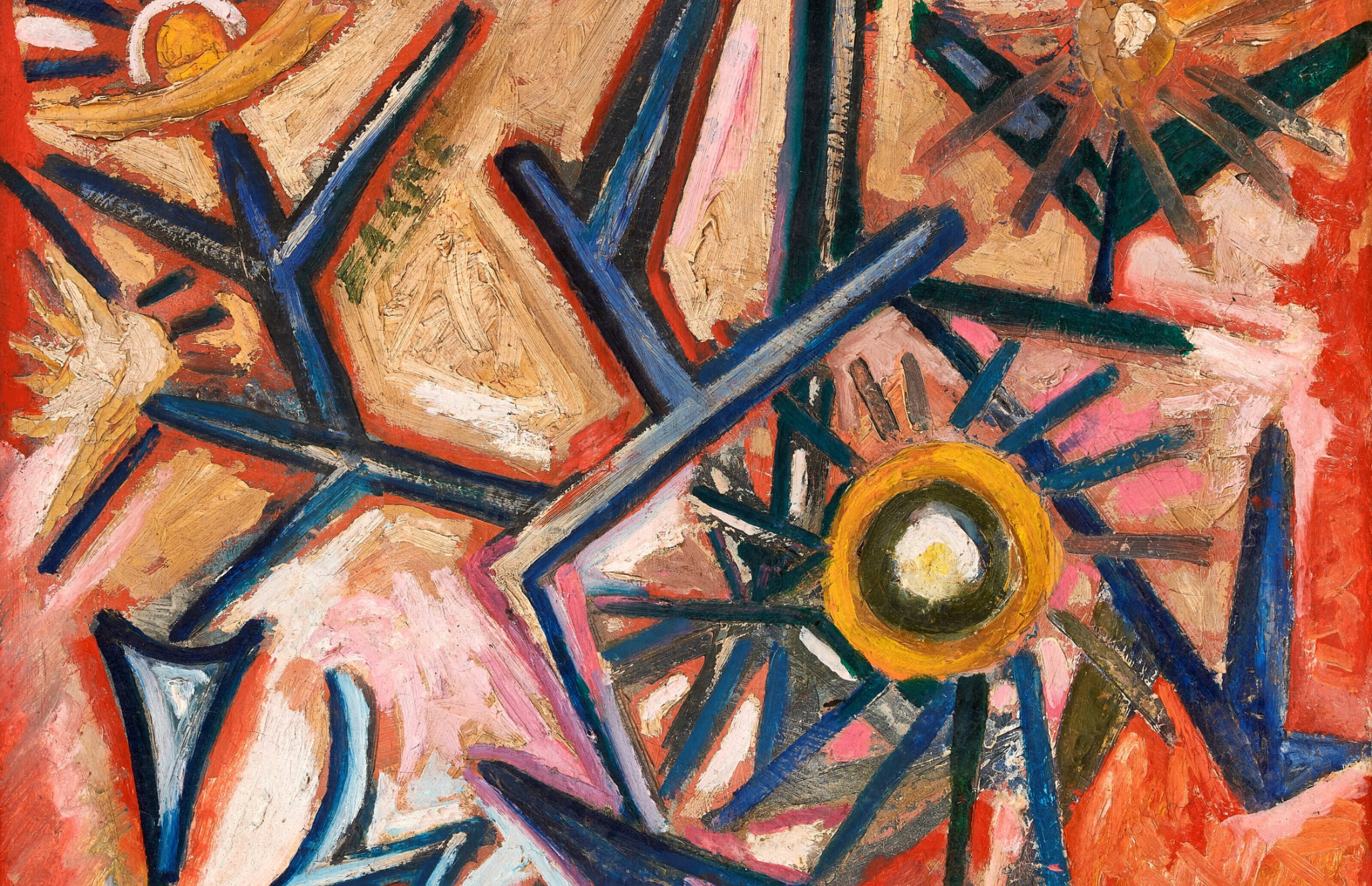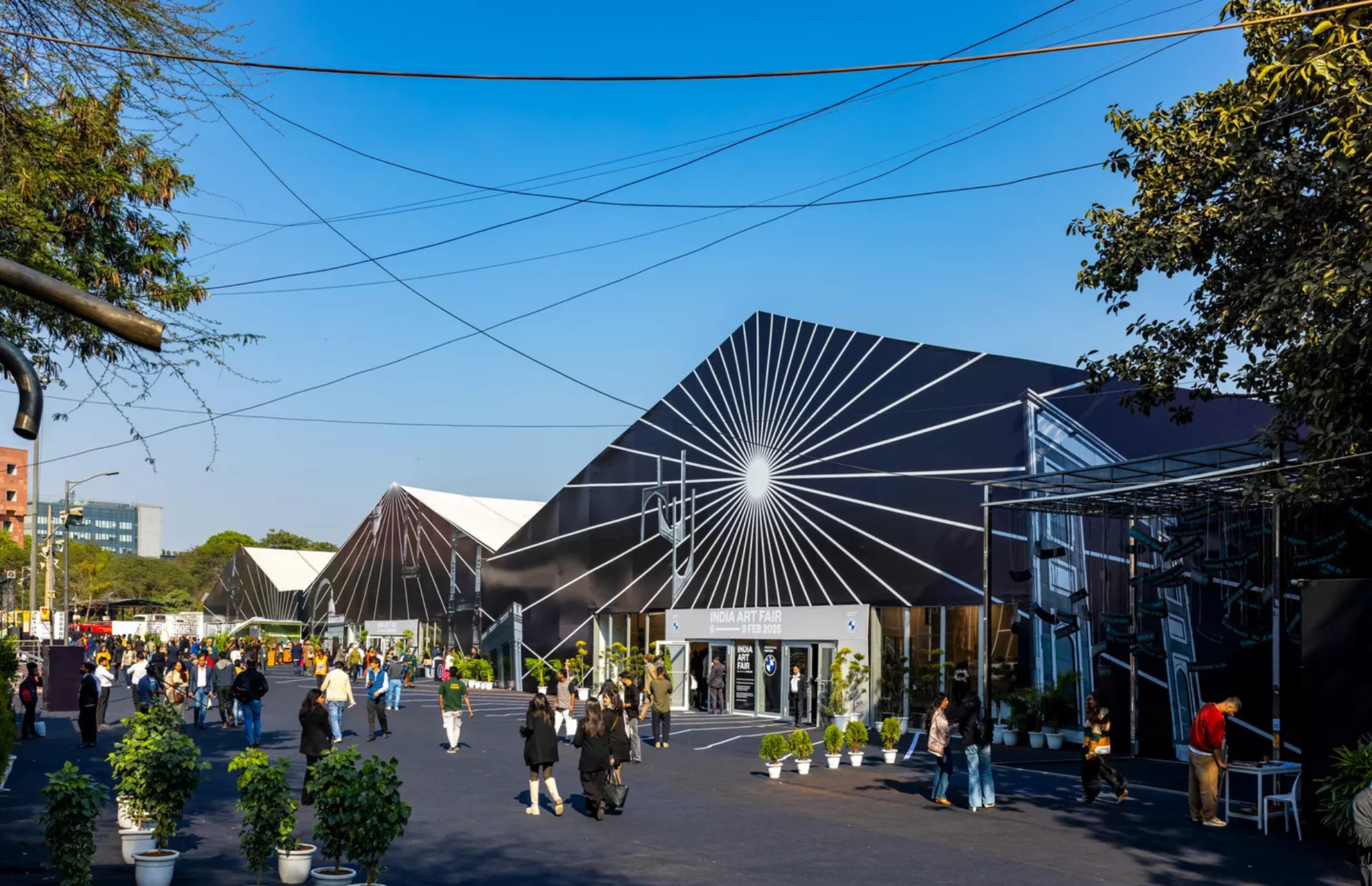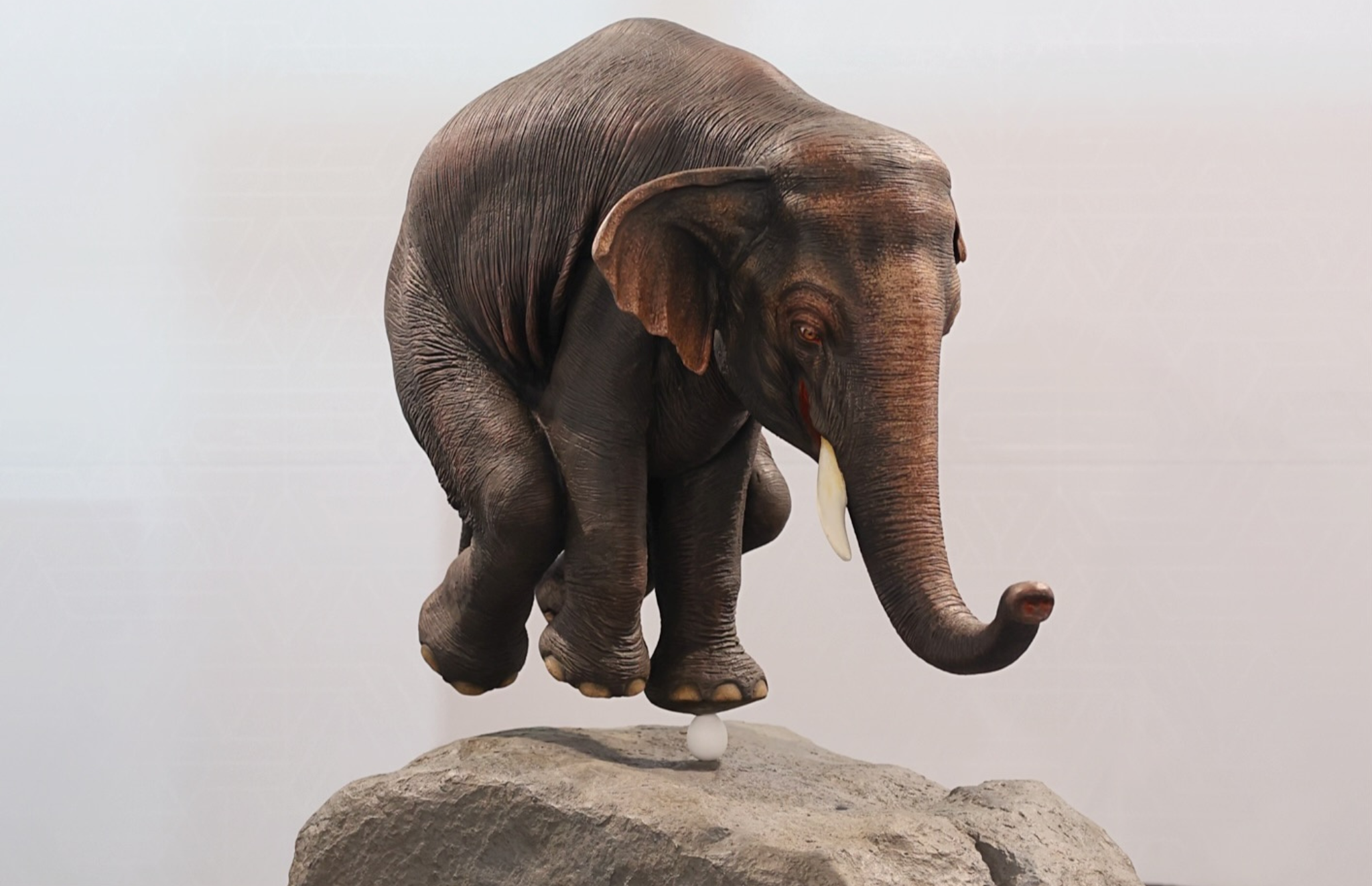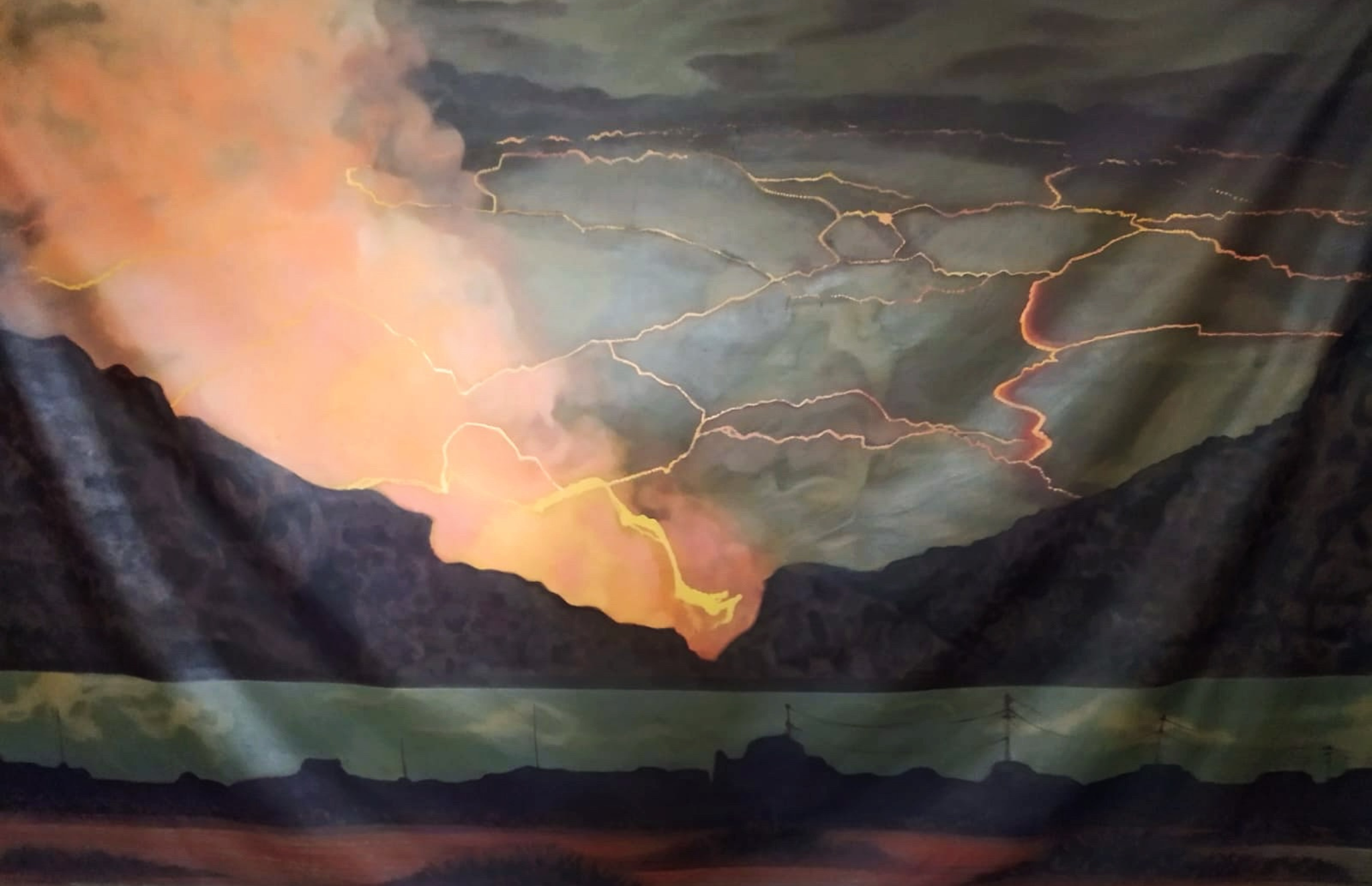NUANCED SPACES
From a repertoire of experiences, experiments and reflections has emerged a medley of works which were conceived and articulated during the Covid lockdown. We feature here three such solo exhibits.
Viraj Khanna
What My Mother Didn’t Teach Me…& Some Things She Did!
Viraj Khanna’s second solo exhibition titled What My Mother Didn’t Teach Me… & Some Things She Did! was on display at Tao Art Gallery in Mumbai. It brought together a diverse array of artworks in different media and was a sequel to his first show titled What My Mother Didn’t Teach Me. Showcasing zoomorphic beings in fibreglass, paper and textile, the show unfolded revealing a new visual language that reflects a contemporary spirit. The diverse range of pieces incorporated themes that revolve around the human condition, its vulnerabilities and how society as a whole influences our choices.

“Growing up surrounded by the arts, especially textiles and embroidery, has helped me develop a certain aesthetic when it comes to the way I see and create things,” says the artist and fashion entrepreneur who is the son of designer Anamika Khanna. Through this show Viraj wants to create a legacy and identity of his own, separate from his mother’s. “I wanted to make it clear, in a sartorial way, that this is something I have done on my own,” says the artist who follows the work of Kaws, Jeff Koons, Javier Callega, Wangechi Mutu and Dana Schutz.
Viraj’s sculptures are made of fibreglass and painted with acrylic and automotive paint. This show also had works with hand embroidery, something which he did not do for his first show. His paintings and embroidered canvases are busy wherein we see disfigured bodies: ghostly eyes with vacant stares, peeping through layers of colour and chaotic palettes of splattered paint; a fish-head fused with a woman’s body and sculptural amalgamation of limbs and heads in many works. The characteristic motif that is visible in all his pieces are multiple faces and exaggerated features. “These depict a behavioural adaptation due to the influences of society. There is a constant battle between our raw, natural form versus our conditioned form,” explains Viraj.

He recounts how he started creating collages during the pandemic lockdown as content for their Instagram fashion page by cutting up magazines, encyclopaedias and other books and putting all the meaningful elements together. Shortly thereafter his collage work evolved into prints and shapes and eventually took the form of sculptures and paintings. He cites Hannah Höch as his biggest inspiration when making the collages. The show also marked Tao gallery’s first ever Non-fungible token (NFT) showcase, with Viraj Khanna having launched three digital collages in addition to the physical canvas and sculptural works.
Commenting on the show, Sanjana Shah, Independent Curator and Creative Director, Tao Art Gallery, shares, “When I first interacted with Viraj’s work, I was completely taken in by how evocative each piece was. The shapes, forms, and colours stood out starkly but then came together in an incredibly aesthetic form. The mediums and processes explored by him show the level of an experiment that is characteristic of the myriad thematic layers he is dappling with.”
What My Mother Didn’t Teach Me… & Some Things She Did!, is a testament to how art can create an alternative vision that goes far beyond the establishment and societal norms.
N.S. Harsha
Stomach Studio
N.S. Harsha’s solo exhibition titled Stomach Studio features 15 artworks which explore themes of collective uncertainty, vulnerability, isolation and despondency against a backdrop of Covid lockdowns. Employing humour and pathos which are characteristic to his artistic practice, these works were conceived and painted during the pandemic. It has been remarked that Harsha‘s artworks are to be ‘read rather than viewed’. This exhibition is currently on display at the Vadehra Art Gallery in Delhi.
Titled Stomach Studio after a personal anecdote involving a witty remark by his mother, the exhibition features highly expressive artworks that are triggered by everyday experiences and beckon the viewer to read between the lines.
One of the paintings is also titled Stomach Studio. It was painted during the early days of pandemic isolations and revolves around surreal cooking events. The concept of collective misery being felt at the individual level is central to most of the works on display.


Stomach Studio (right), Periodical visit of god particles (left), Acrylic on canvas, 2020
Harsha‘s overall art practice takes references from Indian artistic traditions such as the Mughal and Pahari styles to create detailed works on paper and canvas. He has applied repetition and uniform linear arrangements as a tool to convey emphasis and the repetitiveness of daily activities of survival in the backdrop of the Covid crisis. In the painting titled Emission Test(2021), we see hazmat suit clad health-workers performing RT-PCR tests upon rows and rows of people. Upon closer inspection we realise how each person on the canvas carries a separate story and how each of these stories takes us through a gamut of emotions. A sense of vulnerability and fearfulness permeates the work -the subjects with their anxious body language, hunched-up bodies, clenched hands and vacant, faraway looks. But Harsha brings in a touch of humour as well, the painting depicts one of the sample-collectors feeding parrots, another painting clouds around an empty plastic chair. There is a man carrying a turtle on a leash and another person dressed as a king. Here one realises that Harsha is trying to depict how the Covid-19 pandemic has been a social equaliser. The exhibition raises challenging and provocative questions.


Emission Test(right), The Light brought by rats (left), Acrylic on canvas, 2021
Matriarchal Maps of Matrix (2020) depicts the transfer of generational knowledge in humans as well as other animals.
Lamps (diyas) and rats are recurrent motifs across these canvases. Harsha seems to convey that lab rats and diyas could bring the much needed light and respite from the darkness of the Covid crisis.
Light brought about by rats explores the scenario of an interspecies dialogue. In the work Back home, he captures a night in the life of migrant workers through moving images- a girl studying, migrant families huddled together for warmth and food being cooked outside on a community fire “For me art is paying attention to these moments. In this process, art amplifies these private images and integrates them into a much larger collective human experience,” he says.
Amshu Chukki
Different Danny and Other Stories
Amshu Chukki‘s second solo exhibition Different Danny and Other Stories was on display at Mumbai’s Chatterjee and Lal. Chukki works with site-specific installations, videos, photographic prints, drawings and sculptures. His major source of inspiration is cinema, cinematic terminology, folklore and literary fiction and he incorporates in his work the narrative structures of filmmaking.
Through this engaging blend of work he tries to invite viewers to speculate on the meaning and nature of the fictionalised worlds that he brings to life. In this show, Amshu Chukki foregrounded the skills, practices, apparatus, contraptions and terminology used in film making to weave a narrative sequence in which he depicted a typical workday in the life of Different Danny, a famous stunt director of Kannada films. He explored the whole narrative with the city of Bengaluru as the backdrop.
He used film terminology to name the works of the exhibit, for example, the sculpture Dupe describes the concept of a dupe, a term which is used for the body double of an actor. The dupe performs dangerous cinematic feats under looming danger. Danny, the protagonist of Chukki’s film, describes a walk along a stream and then through thick bushes that eventually open up to a waterfall. Here Danny takes the leap of faith- a jump from the cliff for a shot. Danny’s anxiety due to the closure of filming brought about by pandemic restrictions was also featured. The narrative traversed much of the city telling striking visual stories.
In his work Study for a jumping sequence which is an oil on board with a rotating mechanism, Chukki explored a jumping sequence- a leap in space by the protagonist. Close to the jump was a delicate aluminium wire sculpture titled Recce– a term that originates from military reconnaissance and in filmmaking means the process of scouting potential shoot locations.

In a two channel video work titled Shooting mane, Chukki featured a house and its ever changing face as a shoot location. As part of his research Chukki explored many houses which were leased or rented out for the purpose of shooting. He juxtaposed the permanence of a house as a home to a family against its life as an ever changing film set. A stunt- jacket -turned- sculpture and several drawings on paper were also featured in the exhibition.
Text by Prachi Goyal
Images courtesy: Tao Art Gallery, Vadehra Art Gallery, Chatterjee and Lal and the Artists
Find more about the Exhibitions and Artists:





